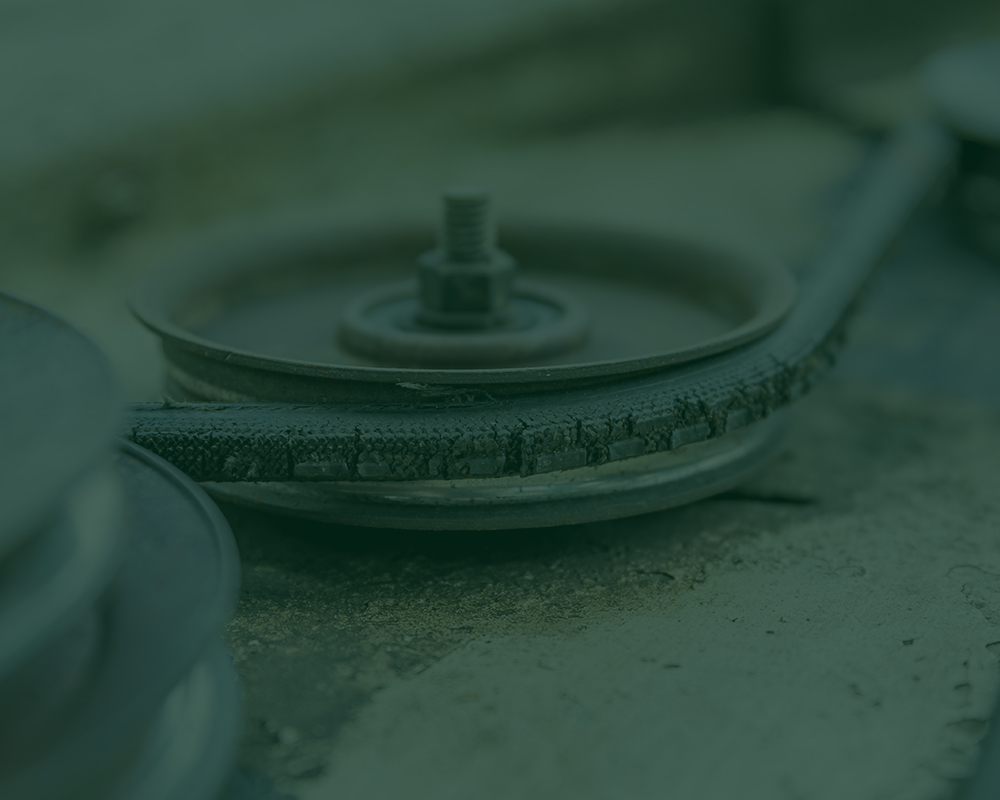Why Your Mower’s Belt Deserves Attention
The lawn mower’s drive belt is one of the most critical components in a mower’s operation. It transfers power from the engine to the wheels and blades, making it essential for movement and cutting efficiency. A healthy drive belt keeps your mower running smoothly, while neglecting it can lead to performance issues and costly repairs. Recognizing early warning signs can prevent breakdowns and keep your mower in top shape.
Key Types of Lawn Mower Belts
Most mowers rely on two primary belt types:
- Drive Belts – Power the wheels for self-propelled movement.
- Blade Belts – Rotate the cutting blades for even grass trimming.
- Timing Belts – Found in some models, these ensure synchronized engine part movement.
In this article, we’ll be focusing on the lawn mower’s drive belt. For questions about other types of mower belts or components, feel free to contact our lawn mower repair support technicians. We provide lawn mower repair services as well as DIY With Expert Help services for readers who want to repair their lawn mower themselves with guidance and support from professionals.
How to Spot a Failing Mower Drive Belt
If you experience the following problems, your belt may be the cause:
- Slipping or Loss of Power: If your mower slows down despite full throttle, a worn belt may be slipping, reducing power and efficiency.
- Visible Damage or Cracks: Use a flashlight to check for cracks, fraying, or glazing on the belt. Any visible wear means it’s time for a replacement.
- Excessive Vibration or Noise: Squealing or rattling can indicate a failing belt that is misaligned or losing tension.
- Difficulty Starting or Stopping: A loose or stretched belt can jam the system, making it harder to start or stop the mower.
- Burning Smell or Overheating: A burning odor suggests excessive friction from a slipping or stuck belt. Stop mowing immediately and inspect the belt.
Could It Be Something Else?
While these symptoms often point to belt issues, other parts can cause similar problems. A failing tensioner, misaligned pulleys, or debris buildup can also lead to slipping, noise, or overheating. Excessive vibration may stem from a loose blade or damaged spindle. Before replacing the belt, be sure to also inspect surrounding components like pulleys and idlers to confirm the root cause.
How to Check and Care for Your Mower’s Belt
Regular Visual Inspections: Check the belt monthly or after every 10 hours of use. Look for cracks, fraying, or slackness.
Safety Tip: Always disconnect the spark plug before inspecting or handling the belt.
Adjusting Tension and Alignment: A properly tensioned belt should flex slightly but not sag. Misalignment or excessive looseness can cause slipping.
When to Replace vs. Adjust: If slipping persists despite adjustments, it’s time for a new belt.
Cleaning Debris Around the Belt
Grass, dirt, and debris buildup can accelerate wear. Use a brush or compressed air to clear out accumulated debris.
Tip: Regular cleaning helps prevent premature belt failure.
Why Timely Belt Replacement Pays Off
The Cost of Delayed Replacement: A worn-out belt can cause additional damage to pulleys, spindles, and bearings. Replacing a $20 belt now can save you from a $100 repair later.
Benefits of Keeping Your Mower in Top Shape: Timely belt replacement prevents unexpected breakdowns, extends the lifespan of your mower, and ensures a smoother, more efficient mowing experience. A little maintenance goes a long way in keeping your lawn working great.
Questions? Contact Us
Need more help? Contact Us with questions related to drive belts, push mowers, riding mowers, and any mower repair and maintenance issues in general.





